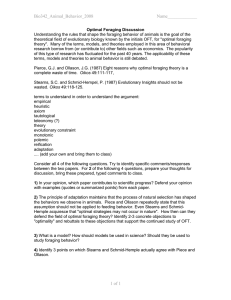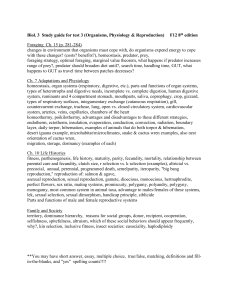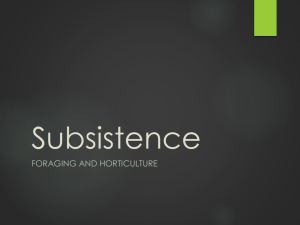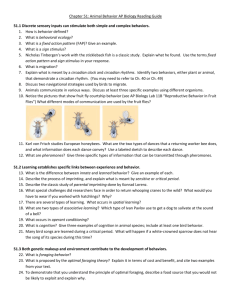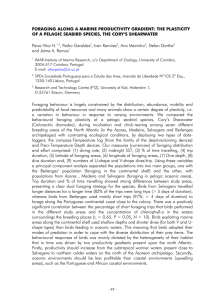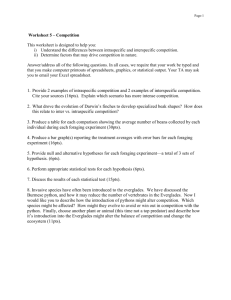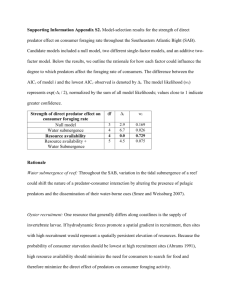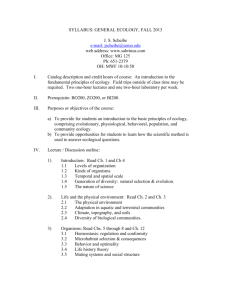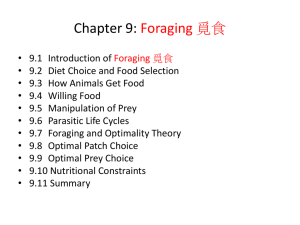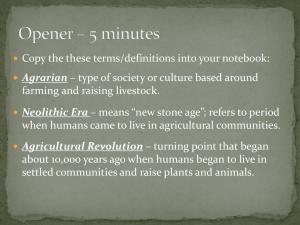Chapter 51.2 and 51.3 Notes
advertisement
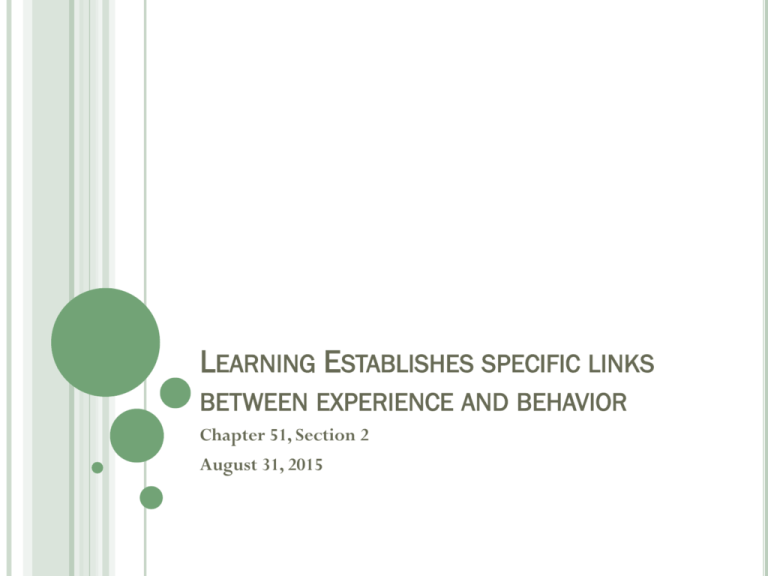
LEARNING ESTABLISHES SPECIFIC LINKS BETWEEN EXPERIENCE AND BEHAVIOR Chapter 51, Section 2 August 31, 2015 INNATE BEHAVIOR Definition: animal behavior that is developmentally fixed and under strong genetic control. Exhibited in virtually the same form by all individuals in a population despite internal and external environmental differences during development and throughout their lifetimes. Examples: Fixed action patterns, reflexes, instinct, etc. EXPERIENCE AND BEHAVIOR Tinbergen’s second question: How does the animal’s experience during growth and development influence the response? One approach to this question is a cross-fostering study, in which the young of one species are placed in the care of adults form another species. The extent to which the offspring’s behavior changes provides a measure of how the social and physical environment influences behavior. Example: Male California mice and White-footed mice LEARNING OVERVIEW Definition: the modification of behavior as a result of specific experiences. Capacity of learning depends on nervous system organization established during development following instructions encoded in the genome. Learning itself involves the formation of memories by specific changes in neuronal connectivity. The essential challenge for research into learning is not the decide between nature and nurture, but rather to explore the contributions of both nature and nurture in shaping learning and behavior. LEARNING: IMPRINTING The ability of offspring to recognize and be recognized by a parent is essential for survival. Imprinting: the establishment of a long-lasting behavioral response to a particular individual or object. Example: Graylag geese (Lorenz) Example: Whooping crane https://www.youtube.c om/watch?v=ihh1xBX wt_0 https://www.youtube.c om/watch?v=uurnNrljbw LEARNING: SPATIAL LEARNING An organism’s fitness may be enhanced by the capacity for spatial learning, the establishment of a memory that reflects the environment’s spatial structure. Example: female digger wasp Experiment Nest Pinecone Results Nest No nest LEARNING: ASSOCIATIVE LEARNING Definition: the ability to associate one environmental feature with another. Example: Blue jays and monarch butterflies Classical conditioning: an arbitrary stimulus becomes associated with a particular outcome. Operant conditioning: an animal first learns to associate one of its behaviors with a reward or punishment and then tends to repeat or avoid that behavior. https://www.y outube.com/w atch?v=MOgo wRy2WC0 LEARNING: COGNITION AND PROBLEM SOLVING The most complex forms of learning involve cognitionthe process of knowing that involves awareness, reasoning, recollection, and judgment. The information-processing ability of a nervous system can also be revealed in problem solving, the cognitive activity of devising a method to proceed from on state to another r in the face or obstacles. https://www.youtube.c om/watch?v=AVaITA7e BZE Example: Bees and the Y-shaped maze Example: Ravens and the food hanging by a string LEARNING: SOCIAL LEARNING Definition: type of learning through observing others Example:Young wild chimpanzees Example: Vervet monkeys in Amboseli National Park Culture is a system of information transfer through observation or teaching that influences behavior of individuals in a population. Culture can alter behavior and influence the fitness of individuals. SELECTION FOR INDIVIDUAL SURVIVAL AND REPRODUCTIVE SUCCESS CAN EXPLAIN DIVERSE BEHAVIORS Chapter 51, Section 3 August 31, 2015-Septermber 1, 2015 OVERVIEW Tinbergen’s third question: how behavior enhances survival and reproduction in a population. The focus shifts from proximate causation- the “how” questions- to ultimate causation- the “why” questions. Food-obtaining behavior, or foraging, includes not only eating but also any activities an animal used to search for, recognize, and capture food items. EVOLUTION OF FORAGING BEHAVIOR Variation in a gene called forager (for) dictates how far Drosophila larvae travel when foraging. Larvae carrying the forR allele travel far. Larvae carrying the forS allele do not travel far. Larvae populations kept at a low density foraged over shorter distances than those in populations kept at high density. The forR allele frequency increased in the high-density groups. The forS allele frequency increased in the low-density groups. OPTIMAL FORAGING MODEL Foraging behavior is a compromise between the benefits of nutrition and the costs of obtaining food. According to this optimal foraging model, natural selection should favor a foraging behavior that minimizes the costs of foraging and maximizes the benefits. Costs •Energy Expenditure •Risk of Predation VS. Benefit Obtain enough food to survive/reproduce BALANCING RISK AND REWARD One of the most significant potential costs to a forager is risk of predation. Maximizing energy gain and minimizing energy costs are of little benefit if the behavior causes the forager to be preyed upon. Example: Mule deer that live in the mountains of western North America

